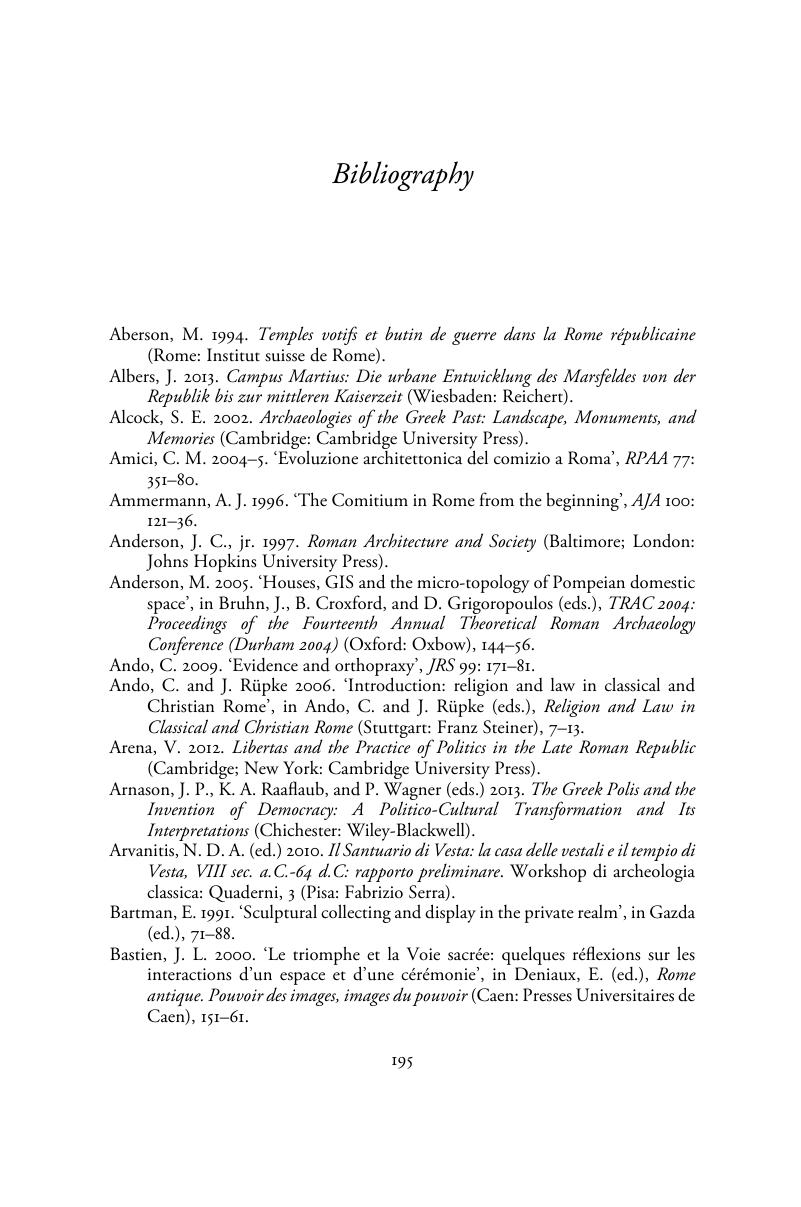Book contents
- Half title page
- Frontispiece
- Title page
- Copyright page
- Contents
- Contents
- Preface
- Book part
- Glossary
- Maps
- 1 Introduction
- 2 Roman concepts:publicusandprivatus
- 3 The definition of political space in the Forum Romanum
- 4 The Forum between political space and private space
- 5 Gods, patrons, and community in sacred space
- 6 Greek art in Roman space: public conquest and private leisure
- 7 Pompey and the privatisation of public space on the Campus Martius
- 8 Conclusion
- Bibliography
- Index
- References
Bibliography
Published online by Cambridge University Press: 05 December 2015
- Half title page
- Frontispiece
- Title page
- Copyright page
- Contents
- Contents
- Preface
- Book part
- Glossary
- Maps
- 1 Introduction
- 2 Roman concepts:publicusandprivatus
- 3 The definition of political space in the Forum Romanum
- 4 The Forum between political space and private space
- 5 Gods, patrons, and community in sacred space
- 6 Greek art in Roman space: public conquest and private leisure
- 7 Pompey and the privatisation of public space on the Campus Martius
- 8 Conclusion
- Bibliography
- Index
- References
Summary

- Type
- Chapter
- Information
- The Politics of Public Space in Republican Rome<I></I>, pp. 195 - 219Publisher: Cambridge University PressPrint publication year: 2015
References
- 1
- Cited by

